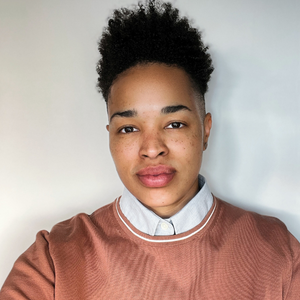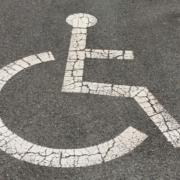What’s keeping white male leaders from leading Diversity & Inclusion efforts?
 Do you hear what I hear? The call for men, and particularly white men, to join in on gender equality and diversity efforts is not only echoing loudly, it’s piling up into a chorus.
Do you hear what I hear? The call for men, and particularly white men, to join in on gender equality and diversity efforts is not only echoing loudly, it’s piling up into a chorus.
White male leaders are being not only invited, but implored to join the case for diversity and inclusion. The predominant argument is not just that diversity advocates want white male leaders to join in, it’s that the success of diversity efforts could be greatly enhanced by their participation due to their continued formal and informal positions of power and authority within companies.
With men holding over 82% of board positions in Fortune 1000 companies, and a significant number of those men being white, their participation in Diversity & Inclusion (D&I) efforts has been proposed as “Creating a New Normal” in the Huffington Post.
So with the invitation in their hands, what keeps white male leaders holding back on their RSVP to diversity and inclusion?
With all of our editorial focus on engaging white men, we thought it useful to take a step back and remind ourselves of the barriers we must navigate in doing so.
Challenges to Engaging White Men
As Chuck Shelton, Chief Executive Officer at Greatheart Leader Labs and moderator of the recent event that theglasshammer.com held on the topic has said, “No business strategy, including D&I, will deliver optimal results when many with position power (white men, in this discussion) disconnect from the strategy.”
The landmark study to date on engaging white men in diversity & inclusion efforts remains his organization’s “White Men’s Leadership Study” which pointed out that white men are less likely to be engaged in diversity and inclusion initiatives at companies.
White male leaders hold both the purse strings when it comes to D&I programs and the social influence necessary to make these programs work. Authors Shelton and Thomas noted that white men are “a significantly underperforming asset in every company’s global D&I investment portfolio.”
The report identified many dynamics into why while male leaders remain both an underperforming – and perhaps undervalued – asset in the movement for diversity and inclusion.
Feeling Excluded
You can’t RSVP to a party you don’t feel invited to. Just a couple years ago, the biggest factor revealed in the study was that white men did not feel included in Diversity & Inclusion. Nearly 70% of white male respondents agreed with the statement, “It is still not clear diversity initiatives are meant to include white men.” 60% of women and minority leaders agreed, too.
This was not limited to a perception among white male leaders. Women and minority leaders didn’t necessarily see the value of including white men in inclusion and diversity programs. “Leaders who are not white and male may quietly doubt that white male inclusion will open doors for them,” the WLMS report said. But when Diversity & Inclusion efforts don’t actively engage white men, they are prone to exclude them.
When women and minority leaders shoulder D&I initiatives, and those initiatives are not seen as owned by all and in everybody’s interest, it creates counter-dynamics. A study published by the Academy of Management illustrated that diversity-efforts on the behalf of women and minorities can be negatively viewed as scheming and (social group) self-serving. The researchers reported, “Ethnic minority or female leaders who engage in diversity-valuing behavior are penalized with worse performance ratings than their equally diversity-valuing white or male counterparts,” which only reinforces the glass ceiling. The research also points out the paradox that for white men “valuing diversity gave a significant boost to ratings for warmth and performance.”
The authors of Gender in Organizations: Are Men Allies or Adversaries to Women’s Career Advancement write, “By excluding men from the focus and development of strategies to attentuate gender disparities, businesses are missing an opportunity to effect change.”
Being protective about diversity and inclusion doesn’t ultimately advance its interests, and engaging white men – who might not feel invited by default – cannot be a passive exercise. It must be an active effort.
Being Skeptical
Another of the biggest challenges identified was skepticism on behalf of white men on the value of diversity and inclusion programs, as well as the suspicion that some people may receive jobs or promotions that they are unqualified for through these programs. The WMLS researchers explained, “Progress is stifled by the perceived tension between the qualifications of diverse employees and the organizational commitment to diversity.”
Another form skepticism took was deflection of relevance. Some white, male respondents seemed irritated to be part of a study on race and gender, and responded with what the report authors called “deflective comments”, such as asserting the questions were unfair or that race and gender doesn’t matter these days. Shelton and Thomas wrote, “We need to recognize deflections, and respond to such viewpoints through honest, straightforward dialogue.”
While prejudice is something you can put your finger on, unconscious bias often is not. Becoming aware of the unconscious bias in each of us, and how it’s at play in the workplace, for example through stereotype threat, helps to reaffirm the importance of D&I efforts.
Also male leaders who are trailblazing in diversity and inclusion have repeatedly advised that to engage men in leadership positions with the value of D&I programs, focus on measurable results (and measuring results) of diversity efforts such as impact on the bottom line and driving innovation in the workplace.
Having Perception & Communication Gaps
A third major factor in struggling to engage white male leaders was that they already perceived themselves to be effective at diversity and inclusion…way more than their peers did.
White men were twice (45%) as likely as women and minorities (21%) to view white male leaders as effective in the areas of diversity and inclusion. The perception gap extended to white men’s effectiveness at coaching and improving the performance of diverse employees (33 points gap); building strong, diverse teams (36 points); promoting diverse talent on merit (36 points); and including diverse voices in decision making (40 points.)
While perception is subjective, statistics showing underrepresentation of diversity are not. The authors suggested that with such a disparity in perception around effectiveness, conversation requires “care and focus,” in which some conflict is to be naturally expected and handled.
“Candor among peers and co-workers is a very important element to this whole process,” said Shelton. “Real diversity and inclusion requires care and ensuring everyone feels that they are part of the effort, including white male leaders.” They noted, “Findings in this research build the case for conversations of care and candor, as we seek to engage and equip white men to integrate diversity and inclusion more effectively into their leadership work.”
Invitation & Opportunity
With the invitation to men being extended on more fronts, as far as the United Nations, perhaps exclusion is becoming less of a barrier for engaging men – perhaps now, the invitation is clear.
Speaking recently with Shelton, he shared, “We’re seeing a lot of organizations in which male leaders are up for ally development. The real measure will be when more men are actually active and accountable as allies and sponsors.”
Equally important is how we co-host the party with men. When we sit together at the table of diversity, we’ll be more likely to evoke change if all parties feel involved and invested in the process, the potential, and the outcome.
By Aimee Hansen










